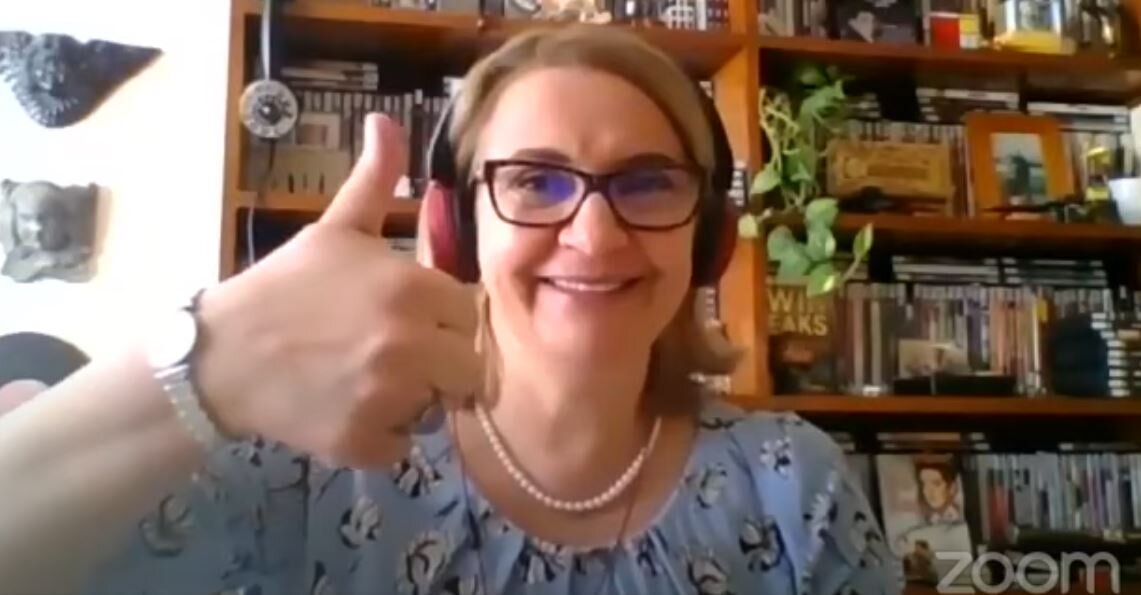“Critical thinking is not a spontaneous activity. Ideas must first be built, and that is the biggest challenge.”
The latest specialized reports on educational innovation highlight the need to develop students’ transversal competencies so they can be ready to enter a changing labor force and volatile world. This is a point made by Ph.D. Patricia Caratozzolo in our webinar in March 2020.
In this webinar, Patricia shared some suggestions with us about how to develop creativity and critical thinking in the Generation Z students (individuals under the age of 24 who are preparing for college readiness). She also presented the results of a research work that she did at Tecnológico de Monterrey to address the following problems of students in this university:
1) the reduction of students’ vocabulary
2) the insecurity that students have about their oral and written communication
3) the difficulty students have in developing critical thinking
To address these problems, she covered the best and most dynamic activities to promote literacy in young people. These mechanisms allow the development of a rich lexicon, and also how to create and evaluate a plan to improve critical thinking.
“Thought is comprised of words. If students only manage 300 words in their day-to-day lives, their thinking will be poor and weak; if you ask them for an argument, they won’t be able to sustain it.”
Most teachers limit their teaching to the development of the disciplinary competencies of their subjects. In contrast, the transversal skills such as cognitive flexibility, creativity, and critical thinking usually remain relegated to the judgment of each school and teacher. This poses an enormous risk because very few teachers have continuous education in teaching-learning techniques adapted to the current generations.
Below, we share some characteristics of Generation Z, according to researcher Patricia Caratozzolo. For the full results of the study, consult the video of the session at any time.
Gen Z characteristics
-
They are entertained by passive visual platforms (YouTube, Instagram).
-
They read only brief pre-digested or curated texts.
-
They do not concentrate for long periods.
-
They prefer not to make cognitive efforts.
-
Their use of social media stimulates only virtual relationships.
-
They write short text messages on WhatsApp or other messaging apps.
-
They express opinions through memes and emojis.
The development of transversal competencies in young people between the ages of 15 and 25 represents a particular challenge because this is the period in which they are actively preparing their disciplinary competences. First, declaring which disciplinary curriculum to pursue during high school or prep school, then discovering their areas of interest among the subjects of the university curricula, and, finally, specializing in the undergraduate and postgraduate courses.
Ph.D. Caratozzolo points out that each generation has unique characteristics, differences, and learning processes, so teachers must be prepared to use different approaches depending on whether they are facing a class belonging to Generation Y (Millennials), Generation Z (post-millennials) or even the new Generation T (tactile). Relive the complete webinar here.
Ph.D. Patricia Caratozzolo (pcaratozzolo@tec.mx) is a professor and researcher in the Department of Mechatronics in the School of Engineering and Science at the Santa Fe campus of Tecnológico de Monterrey. She is Project Leader in Educational Innovation and Senior Member of IEEE (the world’s largest engineering organization). She is a member of IAS, PES, the Women in Engineering Association, and the International Association for Continuing Engineering Education.
This article from Observatory of the Institute for the Future of Education may be shared under the terms of the license CC BY-NC-SA 4.0 
)
)


)